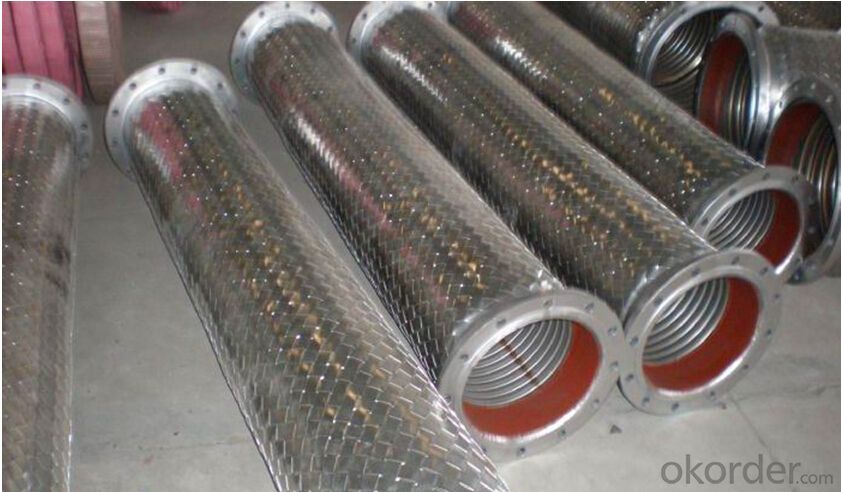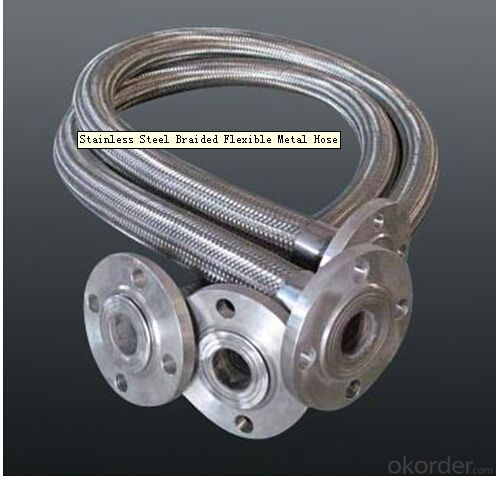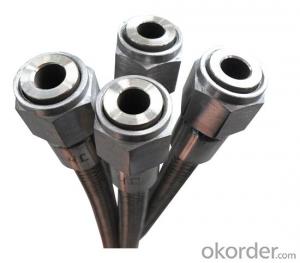Metal Hose in Stainless Steel for Gas Transportation
- Loading Port:
- Tianjin
- Payment Terms:
- TT OR LC
- Min Order Qty:
- 1000 pc
- Supply Capability:
- 100000 pc/month
OKorder Service Pledge
OKorder Financial Service
You Might Also Like
Item specifice
Metal Hose in Stainless Steel for Gas Transportation
Applications of Metal Hose in Stainless Steel for Gas Transportation:
--Refueling system
--Chemical and pharmaceutical industry
--Industrial hydraulic systems
--Air conditioners in industrial and construction –site vehicles
--Food and beverage industry
--Special and standard industrial applications
--Water and cleaning management
Features of Metal Hose in Stainless Steel for Gas Transportation:
1. )O. D.: 13-18MM 0.2-3M long
2. )Nut.: Nickel/Chrome Plated Brass (Zinc / Iron / Aluminum is available)
3. )Size Of Nut.: Female&Male 1/2''; 3/4''; 3/8''; 7/8''; 5/16'', and M10...
4. )Insert.: Brass (Zinc / Aluminum / Plastic is available)
5. )Inner tube.: Rubber/ EPDM/PVC
6. )Covered Material: Stainless Steel 201, 301, 304 /Aluminium Wire
7. )Working Pressure: 5Kg-15Kg
8. )Temperature: 0-92° C
9. )Quality Assurance: 3 years
RemarkAPPLICATION: HOUSEEHOLD WARE, BATHROOM WARE, SHOWER HOSE
PAYMENT: T/T, L/C
DELIVERY TIME: 20DAYS OR 30DAYS AFTER RECEIVED 30% DEPOSITS
MOQ: 5000PCS
ODM&OEM IS ACCEPTABLE
PackageInner: PP bag /Blister packing Outer: Carton box
Specifications of Metal Hose in Stainless Steel for Gas Transportation:
NO | I.D | Refer to O.D | Working pressure | Burst pressure | approximate Weight | |||||
(inch) | (mm) | (inch) | (mm) | MPa | Psi | MPa | Psi | kg/m | lbs/ft | |
1 | 1/8 | 3.2±0.2 | 0.35 | 9±0.3 | 2.06 | 300 | 8.27 | 1200 | 0.078 | 0.12 |
2 | 5/32 | 4±0.2 | 0.4 | 10±0.3 | 2.06 | 300 | 8.27 | 1200 | 0.092 | 0.14 |
3 | 3/16 | 4.8±0.2 | 0.43 | 11±0.3 | 2.06 | 300 | 8.27 | 1200 | 0.108 | 0.16 |
4 | 1/4 | 6.3±0.3 | 0.5 | 12.7±0.3 | 2.06 | 300 | 8.27 | 1200 | 0.134 | 0.2 |
5 | 5/16 | 8.0±0.3 | 0.56 | 14±0.3 | 2.06 | 300 | 8.27 | 1200 | 0.147 | 0.22 |
6 | 3/8 | 9.5±0.3 | 0.63 | 16±0.4 | 2.06 | 300 | 8.27 | 1200 | 0.182 | 0.27 |
7 | 15/32 | 12±0.3 | 0.75 | 19±0.5 | 2.06 | 300 | 8.27 | 1200 | 0.238 | 0.35 |
8 | 1/2 | 12.7±0.4 | 0.78 | 20±0.5 | 2.06 | 300 | 8.27 | 1200 | 0.262 | 0.39 |
9 | 5/8 | 16±0.4 | 0.94 | 24±0.5 | 1.03 | 150 | 4.12 | 600 | 0.351 | 0.52 |
10 | 3/4 | 19±0.4 | 1.13 | 28.8±0.5 | 1.03 | 150 | 4.12 | 600 | 0.515 | 0.77 |
11 | 1 | 25.4±0.5 | 1.38 | 35±0.6 | 1.03 | 150 | 4.12 | 600 | 0.637 | 0.95 |
Images of Metal Hose in Stainless Steel for Gas Transportation:
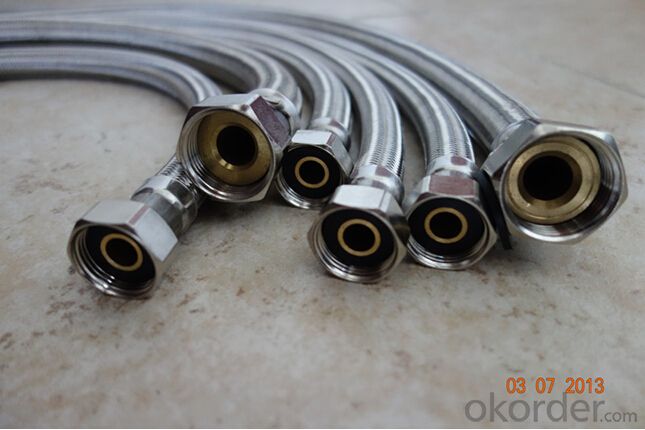
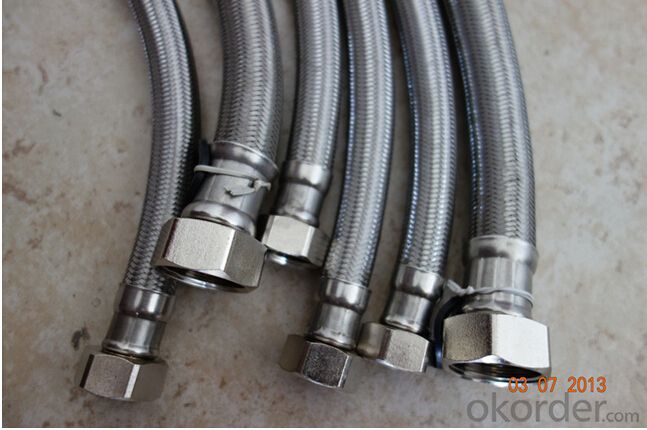
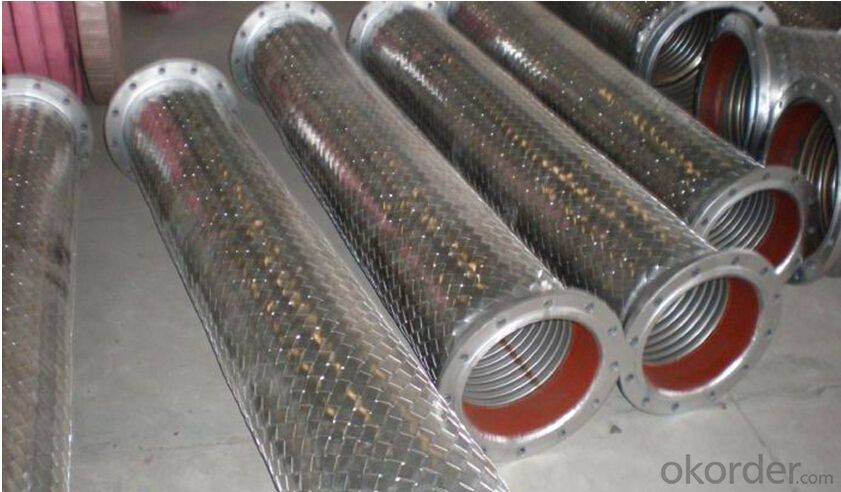
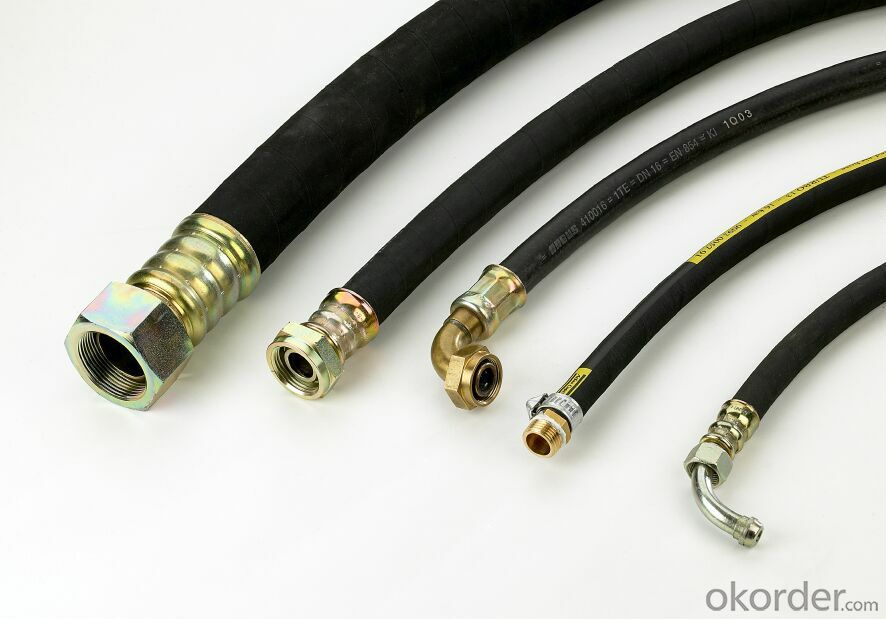
Package of Metal Hose in Stainless Steel for Gas Transportation:
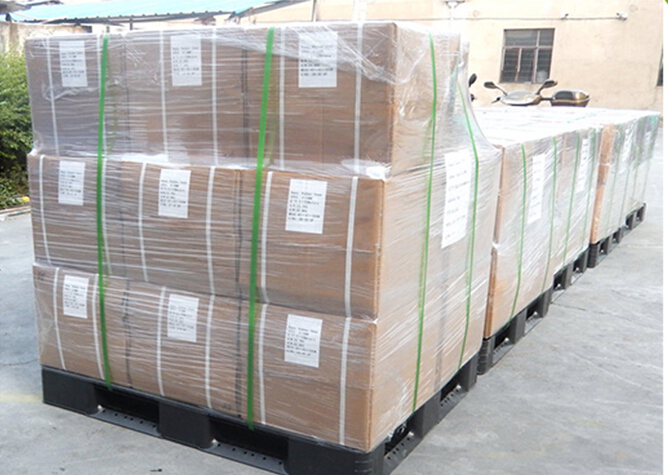
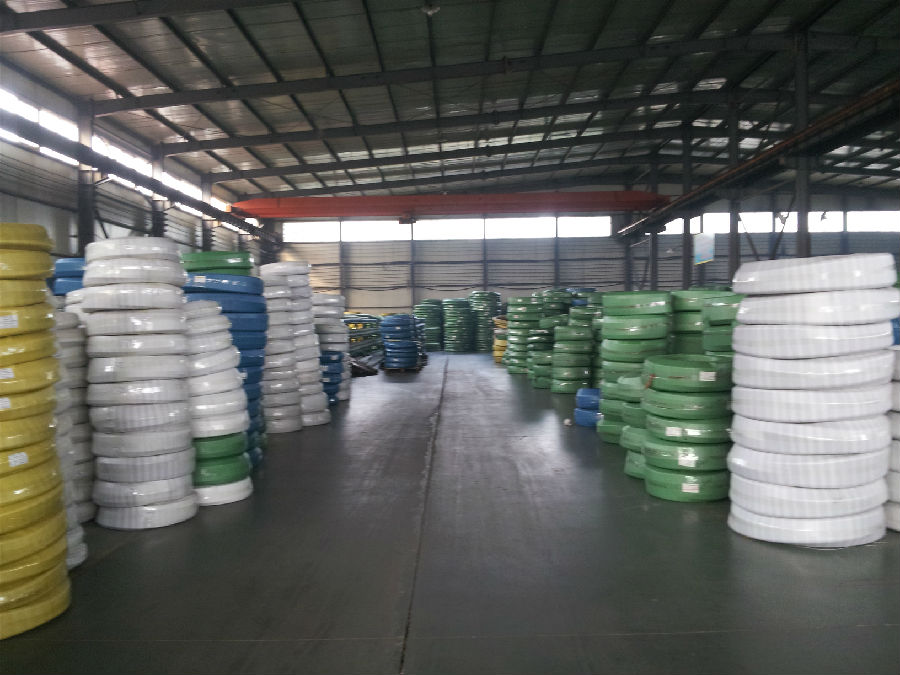
FAQ of Metal Hose in Stainless Steel for Gas Transportation:
Who we are:
Answer: We CNBM is a Chinese state-owned enterprise ranked 267th among the Global Fortune 500, as the largest building materials company,we have over 300 affiliated companies,and so many production lines and branch office distribute in China.
2. About our quality:
Answer: Every product needs to be quality proved before shipping.
3. About our service:
Answer: We could gurantte that we can reply you in 2 working hours.
- Q:What is the difference between 304J6 and 316J6 stainless steel pipes?
- The main difference between 304J6 and 316J6 stainless steel pipes lies in their composition and properties. 304J6 stainless steel is a low carbon variation of the popular 304 stainless steel. It contains around 18% chromium and 8% nickel, which provides excellent corrosion resistance and durability. This grade is commonly used in various applications, including food processing, chemical processing, and architectural purposes. On the other hand, 316J6 stainless steel is an austenitic stainless steel grade known for its higher corrosion resistance compared to 304J6. It contains around 16-18% chromium, 10-14% nickel, and 2-3% molybdenum. The addition of molybdenum enhances its resistance to pitting and crevice corrosion in chloride environments, making it suitable for marine and coastal applications. In terms of mechanical properties, both grades offer good strength and toughness. However, 316J6 stainless steel typically has higher tensile strength and hardness due to its alloy composition. When it comes to price, 316J6 stainless steel pipes are generally more expensive than 304J6 due to the higher cost of molybdenum. Therefore, the choice between the two grades depends on the specific requirements of the application and the level of corrosion resistance needed.
- Q:What is the maximum length of stainless steel pipes?
- The maximum length of stainless steel pipes can vary depending on various factors such as the manufacturing process, the specific grade of stainless steel used, and the intended application. In general, stainless steel pipes can be manufactured in lengths ranging from a few feet to several hundred feet. However, it is important to note that longer lengths may require special handling during transportation and installation due to their weight and potential for bending or damage. Additionally, certain applications may have specific limitations on the maximum length of stainless steel pipes to ensure optimal performance and safety.
- Q:Can stainless steel pipes be used for wastewater treatment plants?
- Yes, stainless steel pipes can be used for wastewater treatment plants. Stainless steel is a highly durable and corrosion-resistant material, making it an ideal choice for applications in harsh environments such as wastewater treatment plants. The resistance to corrosion helps to prevent leaks and minimize maintenance, ensuring a longer lifespan for the pipes. Additionally, stainless steel pipes are also hygienic and easy to clean, which is crucial in wastewater treatment plants where cleanliness and sanitation are of utmost importance. Overall, stainless steel pipes are a reliable and efficient option for transporting wastewater in treatment plants.
- Q:What are the common industry standards for stainless steel pipes?
- The recommended standards for stainless steel pipes differ depending on the intended use and the regulations of each country. Nonetheless, there are several widely recognized and accepted standards, such as those established by the ASTM, ASME, and ISO. The ASTM standards, like ASTM A312 and ASTM A269, provide guidelines for the production and quality control of stainless steel pipes. These standards cover various aspects, including the chemical composition, mechanical properties, dimensions, and tolerances. The ASME standards, particularly ASME B36.19 and ASME B36.10M, specify the dimensions and wall thicknesses of stainless steel pipes for specific applications. Additionally, ASME B31.3 offers guidelines for the design, construction, and maintenance of process piping systems that may incorporate stainless steel pipes. The ISO standards, such as ISO 1127 and ISO 2037, establish international guidelines for the dimensions, tolerances, and surface finishes of stainless steel pipes. These standards ensure that stainless steel pipes can be used interchangeably and are compatible across different countries. Furthermore, specific industries may have their own requirements. For instance, the food and beverage industry often follows the standards set by organizations like 3-A Sanitary Standards, which emphasize the cleanliness and hygiene of stainless steel pipes used in food processing. It is crucial to consult the relevant standards and regulations for each specific application to ensure compliance with industry requirements and to guarantee the safe and efficient use of stainless steel pipes.
- Q:What is the pressure rating of stainless steel pipes?
- The pressure rating of stainless steel pipes varies depending on their size, wall thickness, and the specific grade of stainless steel used. However, stainless steel pipes typically have high pressure ratings due to their excellent strength and corrosion resistance properties.
- Q:How do stainless steel pipes compare to other materials like copper or PVC?
- Stainless steel pipes offer distinct advantages over materials like copper or PVC. Stainless steel pipes are highly durable, corrosion-resistant, and suitable for various applications, even in harsh environments. Unlike copper, stainless steel does not react with water or other substances, ensuring the purity of the transported fluids. Additionally, stainless steel pipes have a higher strength-to-weight ratio than PVC, making them more robust and long-lasting. While copper and PVC have their own merits, stainless steel pipes excel in terms of longevity, reliability, and overall performance.
- Q:Can stainless steel pipes be used for agricultural irrigation systems?
- Yes, stainless steel pipes can be used for agricultural irrigation systems. Stainless steel is known for its durability, corrosion resistance, and ability to withstand harsh environmental conditions, making it a suitable choice for agricultural applications where long-term performance is required.
- Q:What is the difference between 316 and 316H stainless steel pipes?
- The primary distinction between 316 and 316H stainless steel pipes lies in their carbon composition. In the case of 316 stainless steel pipes, their maximum carbon content is 0.08%, rendering them ideal for situations where corrosion resistance is crucial, such as marine environments. Furthermore, they are renowned for their outstanding welding and forming abilities, leading to their popularity across various industries. Conversely, 316H stainless steel pipes contain a higher carbon content, typically ranging from 0.04 to 0.10%. This increased carbon composition enhances their strength and resistance to deformation at high temperatures, making them suitable for applications involving elevated temperatures, such as high-pressure steam systems or the petrochemical industry. Overall, both 316 and 316H stainless steel pipes exhibit satisfactory corrosion resistance and performance. However, the 316H variant is specifically engineered to withstand higher temperatures and possess superior strength properties.
- Q:Are stainless steel pipes suitable for high-temperature applications?
- Yes, stainless steel pipes are suitable for high-temperature applications. Stainless steel has excellent heat resistance properties and can withstand extreme temperatures without losing its structural integrity. It is commonly used in industries such as power generation, oil and gas, chemical processing, and aerospace, where high-temperature environments are prevalent.
- Q:What is the difference between double random length and single random length stainless steel pipes?
- Double random length stainless steel pipes differ from single random length stainless steel pipes in their dimensions and lengths. Double random length pipes are cut in random lengths that are twice the size of single random length pipes. In contrast, single random length pipes are cut in random lengths without any specific multiple. The purpose of utilizing double random length pipes is to accommodate longer sections of piping in industries that necessitate extended lengths. These pipes are typically employed in applications involving high pressure or temperature, such as oil and gas pipelines or petrochemical plants. On the other hand, single random length pipes are more frequently utilized for general-purpose applications where shorter lengths suffice. They are commonly used in plumbing, HVAC systems, or smaller industrial settings. To summarize, the primary distinction between double random length and single random length stainless steel pipes lies in their length. Double random length pipes are twice as long as single random length pipes and are employed in industries requiring lengthier sections of piping, while single random length pipes are more commonly used for general-purpose applications.
1. Manufacturer Overview |
|
|---|---|
| Location | |
| Year Established | |
| Annual Output Value | |
| Main Markets | |
| Company Certifications | |
2. Manufacturer Certificates |
|
|---|---|
| a) Certification Name | |
| Range | |
| Reference | |
| Validity Period | |
3. Manufacturer Capability |
|
|---|---|
| a)Trade Capacity | |
| Nearest Port | |
| Export Percentage | |
| No.of Employees in Trade Department | |
| Language Spoken: | |
| b)Factory Information | |
| Factory Size: | |
| No. of Production Lines | |
| Contract Manufacturing | |
| Product Price Range | |
Send your message to us
Metal Hose in Stainless Steel for Gas Transportation
- Loading Port:
- Tianjin
- Payment Terms:
- TT OR LC
- Min Order Qty:
- 1000 pc
- Supply Capability:
- 100000 pc/month
OKorder Service Pledge
OKorder Financial Service
Similar products
New products
Hot products
Hot Searches
Related keywords





